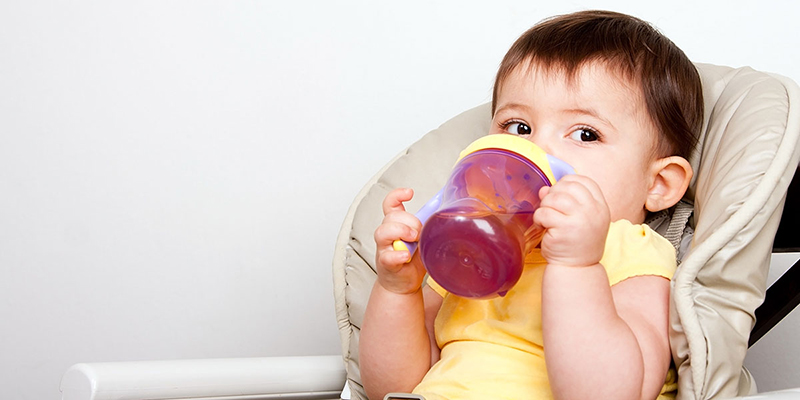
Children who were given juice before they were 6 months old drank more juice and soda, and less water, by early and mid-childhood, on average, than children first given juice at or after 12 months, according to a study conducted by researchers at the National Institutes of Health. The findings support a theory that giving children sweet foods and drinks at an early age fosters a preference for sweet tastes that persists into childhood, increasing the risk for childhood weight gain and tooth cavities.
The research team was conducted by Sonia L. Robinson, Ph.D., and colleagues at NIH’s Eunice Kennedy Shriver National Institute of Child Health and Human Development. The study appears in The Journal of Nutrition.
Background
Findings on whether 100% fruit juice is healthy for young children are mixed. On one hand, consumption of 100% fruit juice is associated with a more diverse diet and higher intake of important vitamins. On the other hand, because 100% fruit juice is low in fiber and high in sugar, researchers are concerned that it may promote weight gain and tooth cavities. In 2017, the American Academy of Pediatrics (AAP) recommended that 100% fruit juice not be introduced into children’s diets until 12 months of age, if at all. Previously, the AAP had recommended that 100% fruit juice not be given to children before 6 months of age.
Researchers undertook the current study to determine if younger age at first juice introduction was related to beverage consumption patterns in later childhood.
The authors analyzed data from a previous study of nearly 5,000 children and their parents, undertaken before the AAP’s 2017 recommendation. Parents were asked about their children’s juice consumption—the study did not distinguish between 100% fruit juice and fruit drinks. The parents completed periodic questionnaires indicating when their infants began consuming juice before 6 months, from 6 to 12 months, and after 12 months. When the children were 24, 30, and 36 months of age, parents indicated the number of 8-ounce cups of juice, soda or pop, water and milk their children drank each day. At age 7, parents completed a 27-item questionnaire seeking information on the types and frequencies of food and drinks their children consumed.
Results
Compared to children first given juice at 12 months, those given juice before 6 months were 1.5 times more likely to drink an additional cup of juice per day at 24, 30, 36 months and 7 years. Children given juice before 6 months had 60% higher odds than those given juice at 12 months of drinking soda at 24, 30, 36 months and 7 years. Moreover, children whose parents gave them juice before 6 months were 10% less likely to drink an additional cup of water per day than were children given juice after 12 months.
Factors associated with lower socioeconomic status were associated with introducing juice before 6 months, including lower educational attainment, smoking during pregnancy, higher body mass index before pregnancy, and lower household income.
Significance
Earlier juice consumption was associated with increased juice and soda consumption in early and middle childhood, which potentially displaced water consumption.
Reference
Robinson, SL, et al. Predictors of age at juice introduction and associations with subsequent beverage intake in early and middle childhood. The Journal of Nutrition. 2021.

 BACK TO TOP
BACK TO TOP